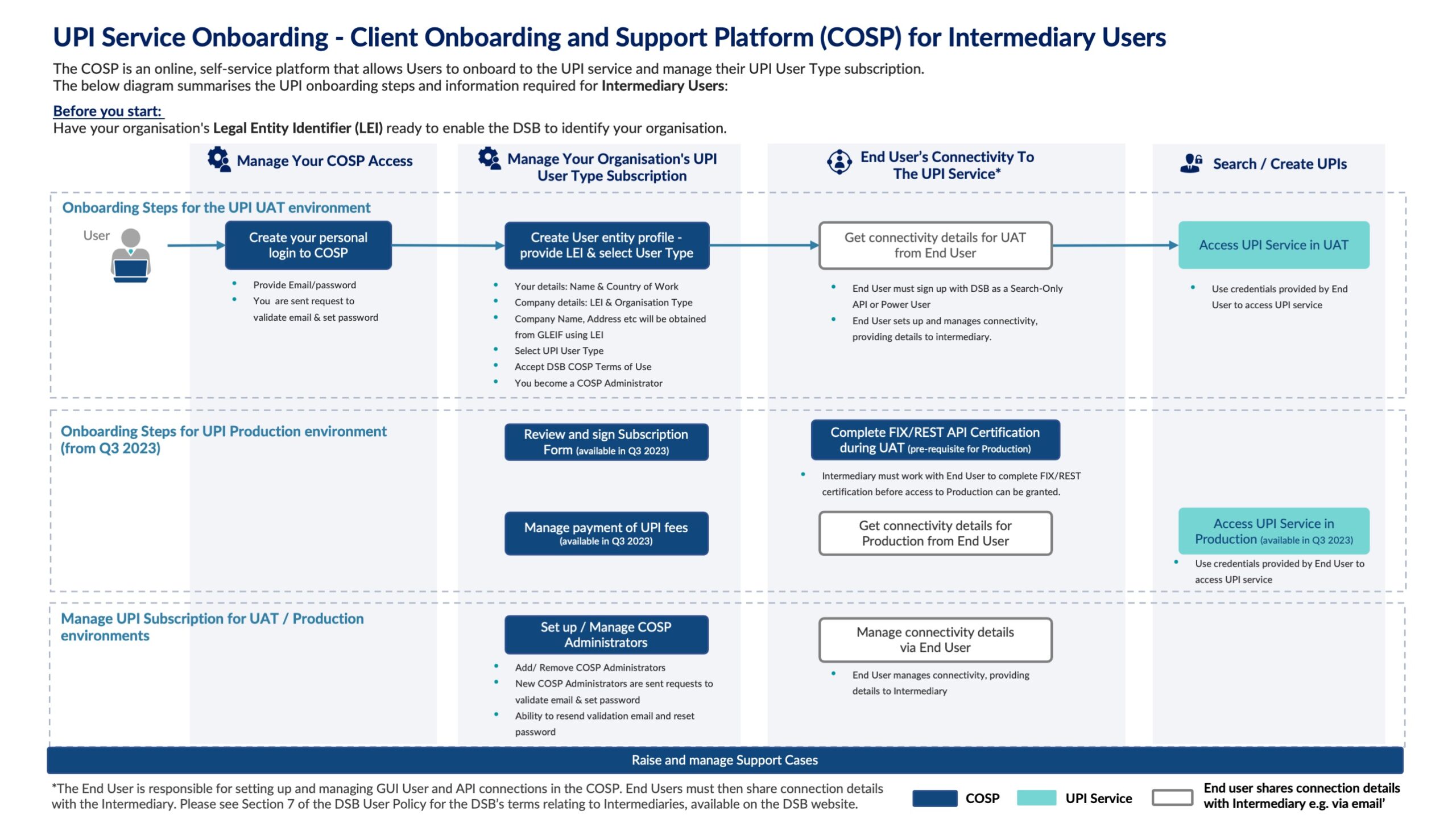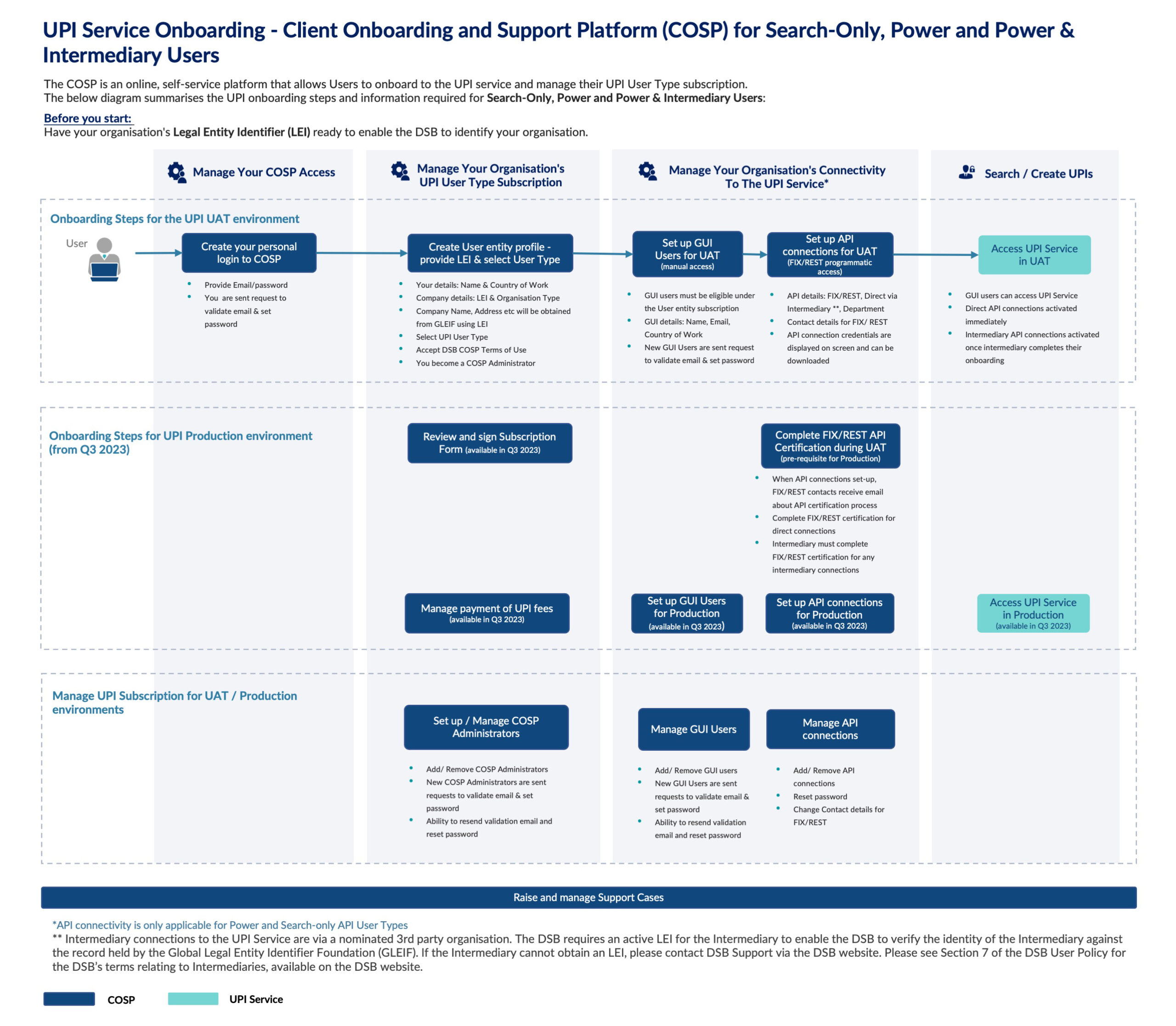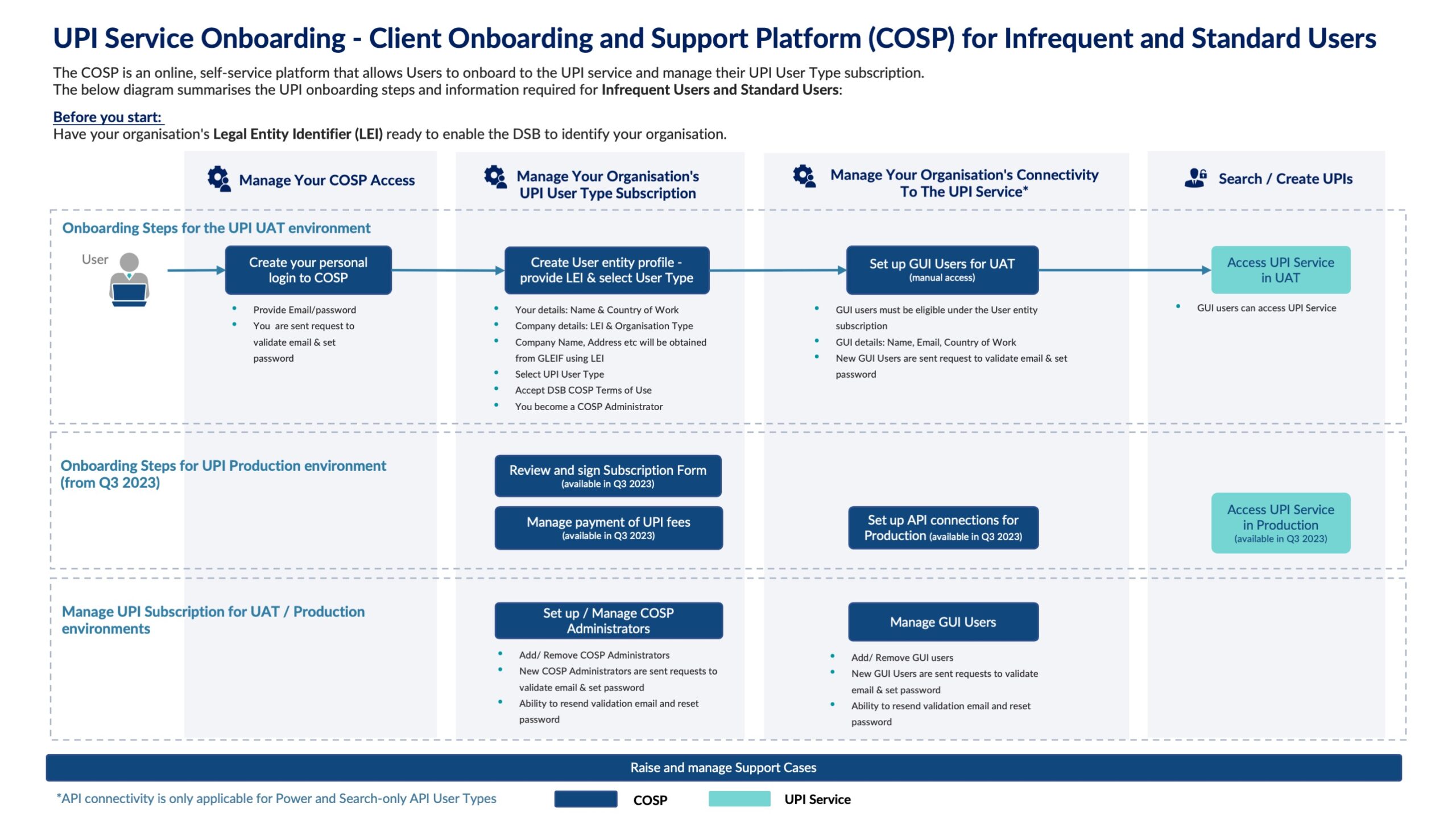Each Change Request Form (CRF) listed in this section of the DSB website has been created on the basis of Terms of Reference (principles, scope, assumptions) that have been reviewed and approved by the Product Committee. The agreement of these design principles have allowed the DSB to produce a set of initial specifications for the UPI but it should be noted that the CRFs are expected to be updated in future to reflect any decisions or changes of approach made in these areas.
Design Principles
The design of the UPI (as detailed in the Change Request Forms) is based on a number of key principles that aim to provide a firm foundation to the template layouts:
- ISO 4914 (UPI) : The product must conform to ISO 4914 (UPI).
- OTC ISIN / Hierarchy : In order to maintain the hierarchy, the product is based on the attributes, values and behaviour of the equivalent OTC ISIN – including the constraints of the system architecture.
- ISO 10962 (CFI) : The UPI Record must include the ISO 10962 (CFI) code associated with the UPI along with an equivalent text value for all attributes that are included in the definition of the CFI.
- PC Decisions : The product takes into consideration any decisions made by the Product Committee
In Scope
The following design elements are included in the Product Definitions:
- CFI 2015 : Since migration to CFI 2019 is currently under review, the product definition is based on the attributes and values defined in ISO 10962 (CFI:2015).
- Primary Underlier IDs : To support the OTC ISIN/UPI hierarchy, only the underlier IDs currently used by the OTC ISIN (eg: ISIN, LEI etc.) are to be included in the product definitions.
- Functional decisions of the PC / review of ISO 4914 (UPI):
-
- Contract Specification : The Contract Specification attribute is to be included in the definition of Credit Products (where applicable).
- Baskets : The individual underlier identifiers are not to be included in the definition of a Basket UPI (except for Basis-style products).
- Swaptions : The underlying Swap for a Swaption will be identified by a UPI.
- Settlement Currency : Settlement Currency is defined as a Conditional attribute within the Forex asset class.
- Other Instrument Type : The product definitions include a single template for non-standard instrument types.
- Other Asset Class : The product definitions provide support for the standard asset classes only – Rates, Equities, Credit, FX, Commodities.
- Multi-Asset Support : The product definition needs to allow the user to specify the asset classes of a multi-asset product.
Out of Scope
The following design elements are not included in the current versions of the Product Definitions – but are subject to on-going review by the DSB / Product Committee:
- CFI 2019 : As noted above, migration to CFI 2019 is currently under review by the PC and so is currently excluded from the CRFs.
- Alternate Underlier IDs : The provision of reference data is currently subject to an RFI and so alternate IDs (such as CUSIP, FIGI etc.) are not included in the design.
- FISN : While the FISN is subject to systematic review, the CRFs use the current OTC ISIN FISN as the basis for the UPI short name.
- Long Name : A Long Name is not required to be included in the product definition.
- Functional decisions of the PC / review of ISO 4914 (UPI):
- Underlying Debt Issuance Tenor Period / Multiplier : These attributes are not required for UPI product definitions.
- Underlying Contract Tenor Period / Multiplier : These attributes are not required for UPI product definitions.
- Single and Interpolated Reference Rate Tenor Period / Multiplier : These attributes are not required for UPI product definitions.
- OTC ISIN Impact : The UPI CRFs do not consider any impact on the design of the OTC ISIN templates. This will be covered by a subsequent project.




